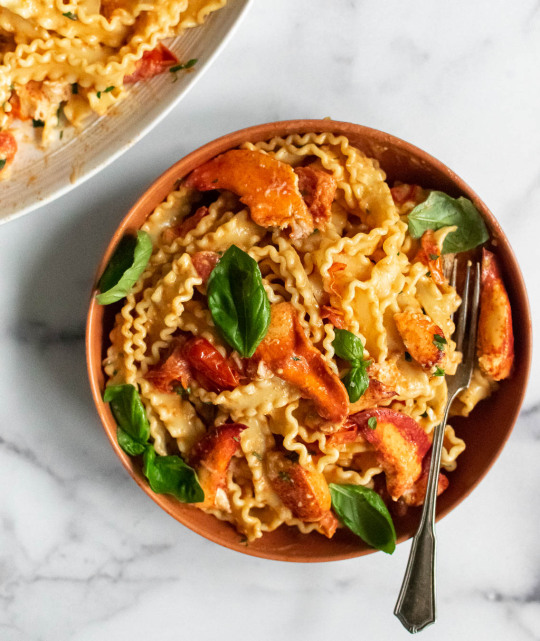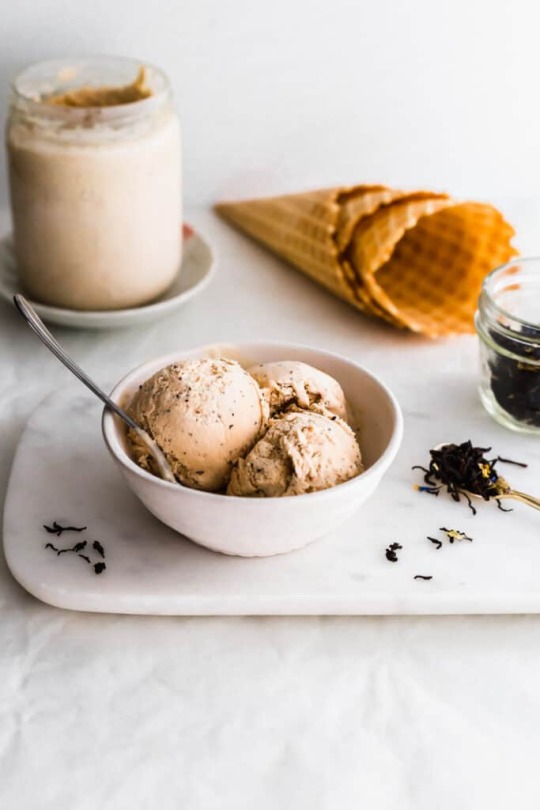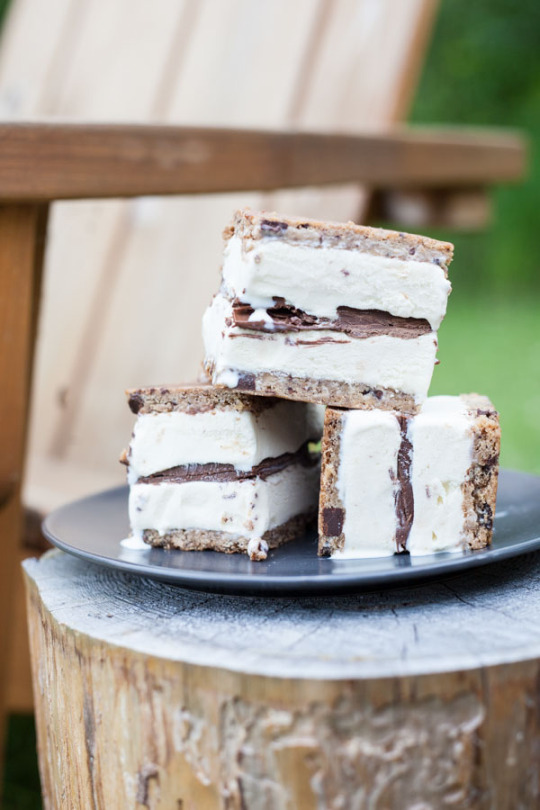Text
Herbs to Boost Immunity this Winter
With winter on its way and the pandemic ongoing, our herbal friends can help to protect us. Medicinal herbs can give us an incredible boost with immune stimulating and tonic properties. Some herbs even overlap in these properties! Remember to always act with caution and safety in mind. Herbs are wonderful allies but they’re not a replacement for modern medicine and antibiotics, especially when dealing with babies, young children, the elderly, or serious infections. Please always seek medical care when needed (and able) and stay safe.
Tonic Herbs - Protect in Advance
Herbal immune tonics are traditionally taken daily in the fall and winter to strengthen immunity and protect in advance against infection. These herbs are slow acting with prolonged effects and must be taken regularly over time. Immune tonics can also be used for those of us with poor immune resilience to build up protection for cold and flu season. Use the word "herb" loosely here because two remedies mentioned are mushrooms :)
1. Reishi, Ganoderma spp.
Herbal Actions: immune tonic, immunomodulator, antiviral, antibacterial, adaptogen, anti-inflammatory, antioxidant, anti-anxiety, cardiotonic, hepatic
The 'mushroom of immortality', reishi taken regularly can enhance the body's immune response. It is especially helpful for those with weaker lungs or with frequent respiratory infections. Reishi is also a traditional tonic for anxiety and may help ease anxiety slowly and steadily. Reishi is best taken as a tea by simmering the mushrooms for a few hours, extracting the active immunomodulating compounds. It's slightly bitter so you may want to combine it with herbs you like or it goes well with a sweeter cinnamon/chai herbal blend. Reishi can also be added to broth and simmered to make medicinal soups. You can purchase dried reishi online or at a local health food store if you have one, cultivate it at home, or forage it in the wild. If you want to try foraging please do your research so you can stay safe while collecting whichever Ganoderma species grows near you. Here's two guides to get you started identifying reishi: Guide, Guide
2. Elderberry, Sambucus nigra
Herbal Actions: Berries: immune stimulant, immune tonic, antibacterial, antiviral, antioxidant, diaphoretic, anticatarrhal (decongestant), anti-inflammatory. Flowers: immune tonic, antiviral, anti-inflammatory, diaphoretic, anticatarrhal, astringent
Elderberries are an extremely valuable immune tonic: effective, nourishing, and tasty. Studies confirm that taken daily during the colder months elderberry can protect us against colds, flu, and other infections, and the bacterial commonly responsible for secondary sinus infections with the flu. If you feel an illness coming on elderberry is also immune stimulating, helps to break fevers, helps decrease mucus, and all around lessens the duration and severity of cold and flu symptoms. Elderberries can be made into a tea, tincture, infused-honey, or a syrup. Tinctures can be made alcohol-free if you prefer as well by substituting a vinegar extraction. You can take elderberry liberally, daily or several times per day but Safety Note: do not give elderberry honey or syrup to babies younger than one.
Elder flowers also have antiviral activity against the flu and can be taken along with elderberry or other immune-boosting herbs. You can purchase dried elderberries online or possibly find them fresh from farms in your area. Elder is also fairly easy to grow if you have the space or forage in the wild but only if you do some serious research as there are several deadly poisonous look-alikes.
3. Garlic, Allium sativum
Herbal Actions: immunostimulant, immune tonic, antimicrobial, diaphoretic, hypotensive (lowers blood pressure), anticatarrhal
Beloved garlic. One of the first records of using garlic was its use to keep Egyptian laborers who built the pyramids healthy. It was later used as a field remedy in WWI, saving lives and limbs by fighting off infections. Garlic is a powerful immune tonic and antimicrobial. Studies back up the traditional knowledge that garlic is highly effective in preventing infections like cold, flu, and infections of the digestive tract. Besides all of the wonderful medicinal properties, garlic is an excellent herb because its cheap, easily obtainable for most people, and easy to add into the diet. Garlic is also easy to grow and lots can be grown in a small area. One clove per day added to food is the suggested daily dosage. To fully reap the medicinal benefits if garlic it should be eaten raw. Safety Note: Garlic can aggravate heartburn, gas, and peptic ulcers, especially raw and in large quantities. Coat garlic with olive oil or in an oil-based sauce to minimize this effect. Garlic also has blood-thinning qualities so consult a doctor if you're on blood thinners and avoid high doses of garlic in the week prior to surgery.
4. Astralagus, Astralagus propinquus
Herbal Actions: immune tonic, immunomodulator, antiviral, antibacterial, adaptogen, antioxidant, cardiotonic, hepatic
Astralagus root has become more popular in recent years thanks to its adaptogenic and tonic immune qualities. Studies show astralagus regulates white blood cell activity and stimulates natural killer cells, strengthening us against pathogens. Taken daily it builds our immune strength. Astralagus is a slow medicine, taking weeks of daily ingestion to reap the full benefits. It's a food herb and safe to eat in pretty large doses. It's great added to broth, an herbal chai, cookies or other baked goods. It has a sweet bean-like flavor that can be hidden easily in dishes for picky eaters or kids. A pressed root can also be tossed into a simmering soup, stew, or sauce and removed like a bay leaf before serving. Safety Note: In large doses (30g or more), astralagus has caused itching and allergic skin reactions, headaches, insomnia, dizziness, hot flashes, and hypertension. Keep your doses below 30g as a caution.
5. Turkey Tail, Tremetes versicolor
Herbal Actions: immune tonic, immune stimulant, antiviral, antitumor, antioxidant
Turkey tail is a medicinal mushroom with powerful antiviral and immune-balancing qualities. It's great for anyone wanting to prime their immune system for the winter months (or travel, group gatherings, going back to school, etc!). It's considered a foundational herb for supporting immune health and is even used in alternative cancer therapies. Turkey tail, like lots of medicinal mushrooms, is best taken as a tea decoction or added to broth. They have a mildly bitter flavor that pairs well with other medicinal mushrooms or herbs. Turkey tail is a very common woodland mushroom and is likely growing near you! It only grows on dead hardwood trees/stumps/branches and occasionally dead conifers. You can find turkey tail in medicinal preparations online or possibly at a local health food store or farmers market. Turkey tail is also a pretty easy mushroom to learn to identify in the wild but there are some look-alikes! Please research and ensure proper identification before consuming. True turkey tails are fan-shaped with stripey colors of blue, brown, grey, red, and white. The undersides are white to tan and have tiny pores! These pores ARE visible to the naked eye! False turkey tails look almost identical but they have NO visible pores on the bottom. Here's a guide to help.
Source
Immune Stimulants - Resist after Exposure & Heal Faster
Immune stimulants or immunostimulants help the body resist illness after being exposed to a pathogen or heal from sickness more quickly if already sick. They work by ramping up our bodies' innate antimicrobial efforts, primarily through white blood cell activity. The effects are immediate but short-lived, so these herbs must be taken frequently to maintain effectiveness. Take at the first sign of being sick or after some sort of exposure like riding in an airplane.
1. Spilanthes, Acmella oleracea
Herbal Actions: immunostimulant, antimicrobioal, anti-inflammatory, sialagogue (makes you salivate)
Spilanthes leaves and gumdrop shaped flowers can be used for lots of infectious illnesses like colds, flu, sinus infections, or ear infections. Clinical studies have shown spilanthes having strong effects against pathogenic bacteria. A tincture, tea, adding to a saline gargle, or just nibbling on this plant will augment the body's immune defenses. It also makes you salivate and stimulates circulation in the gums, which is why it's a traditional toothache remedy. Safety Note: Spilanthes is in the aster family and may cause allergies if you're highly sensitive to plants like ragweed or chamomile. It's very rare but proceed with caution or avoid if so.
2. Echinacea, Echinacea purpurea; E. angustifolia
Herbal Actions: Immunostimulant, antimicrobial, anti-inflammatory, anticatarrhal (decongestant), lymphagogue, sialagogue, alterative
Echinacea's roots, seeds, and fresh flowers are all medicinal and make a wonderful immune-stimulating tea/tincture. You can use echinacea to fight any infection, but it's especially effective on upper respiratory infections. Studies have shown echinacea to be safe and effective against infections like the common cold and that it protects us against lowered immunity that comes from stress. Echinacea is both preventative and curative so it can help before and during illness. Safety Note: Echinacea is also in the aster family so again use caution or avoid if allergic to plants in the Asteraceae family like ragweed or chamomile.
3. Japanese Honeysuckle, Lonicera japonica
Herbal Actions: immunostimulant, antiviral, antibacterial, anticatarrhal, expectorant, anti-inflammatory, astringent, diuretic, antioxidant
One of the most widely used medicinal herbs in the world, Japanese honeysuckle blooms are powerfully antimicrobial, cooling, and anti-inflammatory. It's great for hot, inflamed conditions like head colds, flu, sinusitis, tonsillitis, and feverish conditions. Japanese honeysuckle is native to eastern Asia but has spread as a common invasive plant around the world, so don't feel bad harvesting lots of it to slow the spread. The flower buds and open blooms can be gathered and tinctured. You may also have luck finding it for sale in establishments that sell Chinese medicine. Safety Notes: 1. Not all species of honeysuckle are safe and medicinal like Japanese honeysuckle is. Always make sure you've 100% identified any species you intend to consume. Here's two guides to help you make sure it's Japanese honeysuckle you're gathering: guide, guide. 2. Honeysuckle has also been used to stimulate the menses and childbirth, so to be on the safe side I would avoid internal use if you're pregnant. 3. Only use the flower buds, open flowers, stems, and leaves. The berries are poisonous!
4. Prickly Ash, Zanthoxylum clava-herculis, Z. americanum
Herbal Actions: immunostimulant, lymphagogue, antimicrobial, diaphoretic, circulatory stimulant, sialagogue, antirheumatic, astringent, antibacterial, antiprotozoal
Prickly ash is called such because it sort of resembles the ash tree (but they aren't related) and has prickly thorns along the branches and bark. The bark and berries of this tree are medicinal. Prickly ash's yellow bark was important medicine for Indigenous and subsequently European people in the Americas. The bark is yellow thanks to a powerful antimicrobial alkaloid called berberine. A tea or tincture made from the bark is tingly, strong flavored, and makes you salivate. Take it in small amounts to aid the lymphatic and immune systems and stimulate circulation. Taken in larger amounts it can help with digestive issues. It can also be used to numb the gums and fight bacteria in the mouth. Chewing on some of the twigs or using prickly ash bark powder on the teeth can improve gum health. Safety Note: Certain studies on animals have shown that prickly ash constituents may affect anticoagulant therapy. It may not have this effect on humans but proceed with caution or avoid if you're taking blood thinners or pregnant.
5. Garlic, Allium sativum
Herbal Actions: immunostimulant, immune tonic, antimicrobial, diaphoretic, hypotensive (lowers blood pressure), anticatarrhal
Garlic supports the body in many ways and is so valuable that it deserves mention in both categories. Garlic is a potent immune stimulant and antimicrobial, so it both kills of pathogens and boosts immunity. Its helpful both in preventing infections like common cold or flu and fighting them off if we catch them. Thank you garlic!! Clinical studies and traditional knowledge agree that garlic activates the immune system. It helps to break up mucus and congestion. Raw garlic is the most effective, just chop or slice up a clove and let it sit for 10-15 minutes before adding to honey, soup, vinegar, tea, infused into oil (use oil immediately or within a few days, store in fridge). Don't forget garlic is also an immune tonic and can be taken regularly to boost the immune system long term, one raw clove a day keeps the doctor away :) Safety Note: Garlic can aggravate heartburn and peptic ulcers. Coating garlic with olive oil or in an oil-based sauce minimizing these effects but use caution or avoid depending on your body.
Source
212 notes
·
View notes
Text
7 Reasons to Grow Perennial Sunflowers
Sunflowers (Helianthus) are native to North and Central America. You're likely familiar with annual sunflowers with their big cheery blooms and big edible seeds, but perennial sunflowers are just as cheery and useful! Perennial sunflowers grow in full sun in zones 3-9 and bloom in the late summer through fall. They're drought tolerant and grow in thick patches anywhere from 3-8 feet tall. Sow them in the fall or if you cold stratify them they can be sown in spring after the last frost.
1. Perennial sunflowers are edible. They don't have the big seeds that annual sunflowers produce, but they have small seeds (harvested in late October/November) that are tasty as a snack or sprinkled on salads and other foods. Jerusalem artichokes or sunchokes (Helianthus tuberosus) are known for their nutritious edible roots. Dig up these edible tubers in the late fall after the plants finish flowering. The young green shoots of perennial sunflowers are also edible and tasty! Harvest in the early spring and enjoy them raw or cooked.
2. Perennial sunflowers are deer resistant. If you're looking for a natural barrier that repels deer from your garden, perennial sunflowers might be what you need. Deer do sometimes come to browse the seed heads in the fall so harvest your seeds by cutting the spent blooms, leaving behind the stiff spiky stems that deer don't like. Then cut the stems to the ground for winter to make way for new shoots in spring.
3. Create a hedgerow with perennial sunflowers. Hedgerows are great for lots of things like privacy or windbreaks and perennial sunflowers make a nice thick hedgerow during the growing season. Their roots also form a barrier that keeps grass from growing in areas you don't want it.
4. Create your own mulch and compost. When given full sun perennial sunflowers grow into a thick patch. Chopping them back at the end of the season will give you a HUGE amount of biomass to spread as a mulch or add to the compost pile.
5. Reduce erosion and water pollution. Perennial sunflowers have a root crown and rhizomatous root system that forms a dense underground cluster. This cluster of roots will hold soil in place and absorb water and nutrients. They can also be grown as a buffer to protect a stream or other natural feature from agricultural/roadway runoff.
6. Attract pollinators and beneficial insects. Butterflies, bees, and beetles are all attracted to their pollen and nectar. Ladybugs, lacewings, hoverflies, and parasitoid wasps (all friends) will come patrol the area for aphids, caterpillars, and other garden pests. It's free pest control!
7. Foster wildlife with perennial sunflowers. Since perennial sunflower patches are so dense they produce habitat and cover for birds and other small wildlife. Butterfly caterpillars also feed on the foliage!
Source
330 notes
·
View notes
Text
types of cottagecore humans
strawberry pie: never a time when they're not baking. their bushes yield the sweetest berries. has mastered how to make pie crust. carries their pet around in a little backpack.
golden honey: glowing skin. breakfast on the porch. simple gold jewelry. kisses on the cheek. nurses bees back to health. bakes the most delicious bread.
blue sky: cloud-watching 24/7. rosy cheeks from windchill. knits, quilts, sews, or crochets. can somehow get birds to eat from their hands.
mint lemonade: loud and infectious laugh. will take you on walks around the forest. lets their goats inside their house. long lunch dates filled with finger sandwiches and gossip.
tomato soup: may show up at your house with a meal at any given moment. overalls with patches on the knees. greenest thumb ever. master of herbs.
fresh gardenia: absolutely ethereal. flowing silk clothes. the brightest smile in the world. classical music. wide-brimmed hats. bike rides to the market. bouquets as gifts.
putting this post on your blog means you are pro abortion, queer rights, and trans rights! <3
300 notes
·
View notes
Text
Grow Your Own Herbal Tea Garden
Do you love herbal tea? Do you buy most of your herbs from the store or online? Consider growing an herb or a few herbs that you like to drink! The difference between homegrown and store bought herbs can be astounding and you don't need much space to grow them, a windowsill or patio can be plenty.
Here's some easy-to-grow herbal tea favorites to try:
1. Holy Basil/Tulsi: Easy to grow as long as you have a warm, sunny spot for it. There are several varieties you can choose, but Ocimum africanum or temperate tulsi is a variety that reseeds itself in temperate climates, it's the easiest to grow and germinates well. Temperate tulsi has a bubblegum-like flavor where other tulsis taste more clove-like thanks to their higher eugenol content. Directly sow your tulsi seeds after the last frost, full sun and average to moist soil is the way to thriving tulsi plants. Plant them 1-1.5 feet apart, they'll grow 1-2 feet tall and likely reseed. Harvest your tulsi all summer long until the first frost.
2. Mint: Mints vary widely in flavors and habits, there are over 600 mint varieties! In general mint is very easy to grow (maybe TOO easy, they can grow out of control and spread if you don't contain them). If you know someone already growing mint it's very easy to propagate your own plant from theirs. Mints are comforting herbs that help soothe and warm the digestive system. Mint prefers lots of water and sun and grows about 1 foot tall, it will die back in the winter but rise again in spring. You can harvest it all season long and the leaves change flavor as the plant flowers! You can experiment with tasting your mint throughout the season and see what flavor you like best.
3. Anise Hyssop: Super easy to germinate from seed, grows quickly, is easy to harvest, has a sweet minty-anise-licorice flavor that makes a delicious iced tea, AND it's beautiful plant that attracts pollinators! It's hard to think of much more to ask for in an herb. Anise hyssop's purple flower stalks are irresistible to honeybees, painted lady and monarch butterflies, and hummingbirds. Germination is easier if you stratify your seeds and sprinkle the seeds right on the surface of the soil and very gently tap them in. Plant them out after the last frost in a sunny spot, they'll grow 1-2 feet tall and can be planted about 8 inches apart. Anise hyssop is an annual that self-sows and will come back as a short-lived perennial. Harvest all season long and pinch off the tips in early summer to keep the plant producing tender leaves for your tea.
4. Lemon Balm: Another one in the mint family but with a bright lemony flavor with earthy and sweet tones. Lemon balm is a perennial that grows in hearty patches, and depending on your growing zone may produce leaves year-round. The winter leaves are smaller but extra strong in lemony flavor. You can grow lemon balm from seed or if you know someone growing it it's very easy to divide and quickly grows more plants. It can grow in full sun, part shade, and full shade but grows best in a spot that gets morning sun and afternoon shade. In late winter snip off the old flowering stalks to the base of the plant so it can grow new in the spring.
5. Chamomile: Dainty daisy-like flowers and feathery stems, chamomile is a gentle and calming herb for tea. It grows more slowly than other herbs so give yourself time and space for chamomile. Start your seeds a month before the last frost or buy plants from a local nursery. Chamomile likes full sun and needs to be planted about 1 foot apart. It'll grow about 1.5 feet tall and is an annual but can self-sow. You can also take ripe seed heads and crush them between your fingers over the garden bed/container to increase the plant babies the following year.
6. Lemongrass: A refreshing and flavorful herb, lemongrass grows well from divisions from established plants. An annual in temperate climates that, but lemongrass can be kept alive year round by growing it in a container you bring indoors for the winter. Lemongrass grows a lot in one year if you water it frequently and keep it in a warm sunny spot, so it being an annual doesn't matter too much for your harvests. You can take cuttings for tea all summer long until the first frost.
7. Red Clover: Frequently found growing wild, red clover is also very easy to grow for yourself. It flowers around May and you can harvest straight through until the first frost. If you leave some flowers unpicked every few feet the red clovers will reseed for next year. Red clovers have a densely fingered root system that can strangle other herbs if you try to companion plant. Give red clover space to grow freely or treat it as groundcover and a cover crop to help your soil.
8. Elderberry: A much larger herb, elder is actually an herbal shrubby tree... and it does like to spread. Likely not feasible for smaller spaces, but fresh elderberry tea is so tasty and healthy I had to include it. Both elderflowers and elderberries can be harvested for tea so multiple seasons of gifts from this tree! Plant elder in damp soil with full sun, someplace like a sunny bank of a creek or pond would be perfect. Elder grows well from cuttings, you can just stick cuttings (12in long or so) in the ground about 3 feet apart and pretty soon you'll have a grove of elder trees bearing loads of fruit. One season is all it takes. You can cut the entire area of shrubs back to 6 inches each winter to keep the grove young and fresh for fruit.
Drink your weeds too! While you grow your herbal tea garden, nature will likely gift you lots of weeds that also make great herbal teas. Dandelion, violet, plantain, and mullein are just a few that commonly pop up. It's free herbal tea!
Source
498 notes
·
View notes
Text
Basics of Making Herbal Home Remedies (With Basic Recipes)
Herbal Teas
Teas or infusions are a simple and enjoyable way to use medicinal plants. There are so many incredible herbs that can be made into teas whether you grow or forage them: rose petals, raspberry leaves, beebalm, mint, echinacea, elder flowers/berries, calendula, nettles, thyme, violet flowers/leaves, lavender, the list goes on and on!
Don't be afraid to create your own herbal blends as long as you know all plants you plan to combine are safe. I love making seasonal blends of whatever I can gather at the time, it makes for a one-of-a-kind tea and a special connection to nature and the seasons.
To Make Herbal Teas:
Leaves and flowers are steeped for about 5-8 minutes to make a tea.
Roots and berries need to be decocted to release their flavor and medicines, this means you'll need to simmer them in water for about 15 minutes.
If you're using fresh herbs use 1 tablespoon for each cup of hot water.
If you're using dried herbs use 1 teaspoon for each cup of water. If you'd like to dry the herbs you collect, here's a link to my post exploring some different drying methods!
Syrups
To make an herbal syrup you'll start with a strong herbal tea. Steep your herbs for a good long time so your tea is nice and strong, 15 minutes to an hour should be good.
Here's two simple methods to make syrup, one with sugar and one with honey:
Sugar Method
1 cup of strong herbal tea
2 cups of sugar
(Optional) 1/4 cup vodka or brandy
Combine your tea and sugar in a saucepan and heat on the stove, stirring until all the sugar is dissolved.
Bring your mixture to a boil and let it boil hard for 3 minutes.
Remove from heat and skim off the top if needed.
Add vodka/brandy if you choose (it keeps it shelf-stable for longer) and pour into a sterilized bottle or jar. Store in the fridge (it should stay good for up to 6 months).
Honey Method
1 cup of strong herbal tea
1 cup of honey
(Optional) 1/4 cup vodka or brandy
Combine your tea and honey in a saucepan and heat gently on the stove to combine. Stir. Not much heat is needed here.
Add vodka/brandy if you choose and pour into a sterilized bottle or jar. Store in the fridge.
Tinctures
Tinctures are an incredible and long lasting way to use your medicinal plants. The alcohol is such a strong preservative that tinctures don't really go bad, at least not for many years. You can use any alcohol you like, but 80-100 proof seems to work really well to pull medicinal components from the plant material. Also keep in mind that very high proof alcohol (like 190 proof grain alcohol) is often too strong for tinctures. A lot of people use whiskey or brandy for tinctures, but others like gin, rum, or vodka will work just fine.
Folk Method for Making Tinctures:
With Fresh Herbs:
1 pint canning jar
Enough fresh herbs to loosely fill the jar
Alcohol to fill
With Dried Herbs:
1 pint canning jar
Enough dried herbs to fill the jar one-quarter to one-third of the way
Alcohol to fill
Add all ingredients to the jar and screw the lid on tight.
Allow it to steep 4-6 weeks, shaking the jar once per day.
After 4-6 weeks strain the plant material out. Your pint jar should have 1-2 cups of tincture depending on the herb you used. This should be enough to last you about a year!
For most herbs, one dropper full of tincture = 1 strong cup of herbal tea. Use as needed!
Salves/Balms/Ointments
A salve/balm is an herb infused oil mixed with a small quantity of wax (usually beeswax). The amount of wax you'll use depends on how hard you want your salve to be.
Some General Ratios for Salves/Balms:
Salve/Ointment: 6-8 parts infused oil, 1 part wax
Lip Balm: 3 parts infused oil, 1 part wax
Lotion Bar: 2 parts infused oil, 1 part wax
Melt down your wax and add the infused oil using the ratios above!
Infusing Oil for Your Salves:
Here's a link to my more detailed post about making herbal oil infusions, but there's two main methods to make an infusion:
Slower Method (takes a few weeks): Fill a jar two-thirds of the way with your herbs and fill it with oil. Stir it up, put the cap on, and leave it in a sunny spot to steep for a few weeks. After a few weeks, strain it and recap it.
Faster Method (takes about a day): Gently heat your oil and herbs with a double boiler, a crockpot on low, a low temperature oven, or a dehydrator. After heating pour your mixture into a jar and let it steep overnight. The next day strain it and recap it.
When you strain your plant matter from your infused oil, give the herbs a good squeeze. They will have absorbed some of the oil and you don't want to miss out on that good herb-rich oil the plants are holding onto!
Source: Sams, Tina. Healing Herbs: A Beginner's Guide to Identifying, Foraging, and Using Medicinal Plants. 2015.
1K notes
·
View notes
Text
masterpost of cooking, crafting, domestic, etc things i found
an introductory guide to watercolour painting
apple cookies
boss the basics - how to make bread
cherry pie pastry envelopes
cream cheese strawberry cookies
create your own hanging garden
crochet cat paw chair socks
crochet easy coin wallet
crochet strawberry coaster
cute crochet mushrooms
crochet wildflower coasters
dandelion and daisy cookies
diy chive vinegar
diy jewellery organisers
diy rose oil and rose water
easy homemade potpourri
edible glitter chocolate bars
floral bath salts
frog macarons
handmade floral gift ideas for any occasion
homemade deodorant
how to make daisy salve
how to make dandelion oil and ways to use it
how to make diy fairy wings with cellophane
how to dry herbs
how to make heart shaped pot holders
how to make an ocean diorama
how to make seashell string lights
how to make a terrarium
how to preserve flowers in resin
how to press flowers and leaves
how to sustainably tap a birch tree
how to turn wildflowers into crystallised candied sweets
lavender body oil
lavender cookies
lavender honey lemon cake
lavender lemonade
lilac honey recipe
map coasters
moon and stars baby mobile crochet pattern
painting an acrylic cherry tree forest
pinecone picture frame ornaments
rose ice-cream
sand art terrarium
strawberry and cream handbag crochet pattern
strawberry and orange personal pouch crochet pattern
strawberry butter
strawberry, elderflower, and dandelion wine
tanzhong milk bread
the art of japanese bookbinding
the free coffee that grows all around us
vintage floral nail art
white chocolate cherry fudge
wild violet vinegar
4 types of drawing clouds - acrylic painting
5 ways to grow food without a garden
8 cute and easy hairstyles from japanese fashion magazines
10 copycat cleaner recipes
10+ things to make with violets
12 homemade gifts for book lovers
13 crafts made from recycled jars
19+ flavoured butters
21 household problems you can solve with bicarbonate of soda
30 cleaning hacks
50+ dandelion recipes
TRAD WIVES BEGONE; I'M A LEFT WING LESBIAN AND DIDN'T MAKE THIS FOR YOU HOMOPHOBES AND MISOGYNISTS
4K notes
·
View notes
Photo

The BEST Chocolate Chip Cookies
2K notes
·
View notes
Photo

Creamy Tomato and Lobster Pasta
144 notes
·
View notes
Photo

Traditional Korean Party Menu Ideas for Holiday Dinners!
Follow for recipes
Is this how you roll?
822 notes
·
View notes
Photo

No-Churn Earl Grey Ice Cream
268 notes
·
View notes
Photo


Nutella and Chocolate Chip Cookie Ice Cream Sandwiches
1K notes
·
View notes
Text
Valorant has infinitely better character design than Overwatch because both games have a hooded figure whose face is hidden that talks in a deep voice but where Reaper is just Like That™ you have Omen that doesn’t wear a mask because he isn’t human anymore, the Infamous-esque event that gave a lot of the characters different powers made him almost like a ghost

But you find out thru dialogue with other characters that his name is Fred and one of his hobbies is knitting because it helps him relax. Like cmon what’s better than that
529 notes
·
View notes
Text
The agents living in the same base together (should be illegal)
No god please stop
It’s so chaotic
Atleast the first few nights when they moved in
In fact the first night they all moved in nobody was able to sleep
“No Raze this is not a sleep over party put the rocket launcher down” -every agent
The agents that kept everyone awake: Jett, Phoenix, Raze, Killjoy, Breach,
The ones that just wanted to sleep: Brimstone, Cypher, Omen (does he even sleep?) Reyna
The group mom trying to calm everyone down: Sova and Sage
And Viper: who can somehow sleep through all the noise they were creating
After they got past the initial move it was just like any other functional household (If you consider the occasional explosion from either Raze, Killjoy or Cypher functional)
Everyone would take turns cooking for the group but after the first cycle through their makeshift system it was quickly changed and so some agents were banned from ever cooking
Ahem that would be Raze (they had to remodel the kitchen afterwards), Phoenix (the real monster here he eats marmite), Omen (DOES HE EAT?), Killjoy (unless you wanna eat instant/frozen food for the rest of the day)
When the base is not in mortal danger because of an agent though it is very peaceful
After all these crazy events in their life strangely this is the only thing that gives them a sense of normalcy
Secretly I think they all just want a domestic life, maybe not the white picket fence life but a life where they can just live without thinking if they’re going to live to see another day
But they don’t regret taking this path (at least they tell themselves that)
Monday for them can easily feel like a Friday with the agents all together
I can see them all playing games together even if there isn’t enough controllers it’s entertaining to watch
Just don’t play with Cypher if he sees an opportunity to cheat he will definitely take it especially in card games
“Show me your hands!”
A very common line between him and the agents
Can we all agree that Omen is the house cat?
10/10 best housemate
Will offer to help with the chores or just take over so that his ally can get some rest after a hard mission
Naturally though the agents will take on some roles as they figure out who is better suited for what
Sage totally makes all the coffee and tea
Reyna does a lot of the mopping
Brimstone is holed up in his room strategizing for the next mission but will occasionally do everyone’s laundry
I’m sorry but Viper is probably the one reaping all the benefits without lifting a finger maybe once in a blue moon she’ll cook if she’s tired of the same agents cooking
Killjoy of course will be fixing all machinery that breaks
Cypher might help but is shooed away
But still no matter how long they’ve all been living together it’s unavoidable for chaos to erupt
Ty for reading this! It’ll help a lot if you interact w this post so that more people can see 💕 I would also put hcs of what their rooms would look like but I feel like that should be another post.
#valorant#valorant headcanons#valorant raze#valorant jett#valorant phoenix#valorant killjoy#valorant breach#valorant brimstone#valorant cypher#valorant omen#valorant reyna#valorant sova#valorant sage#valorant viper
283 notes
·
View notes
Note
So HYPOTHETICALLY if i wanted to seed bomb a golf course, what kind of plants are hard to get rid of and also not invasive?
Seed bombing is a bad idea and will ultimately make things worse. A golf course owner isn’t going to throw up their hands and go, “Oh, well, you win this round, ecologists!” it go to the effort of removing the plants carefully. They’re just going to dump loads of extra herbicides on them, ultimately leading to more harm than good.
13K notes
·
View notes
Text



I love this! Give Iris all the respect and admiration she deserves!😀🌹
174 notes
·
View notes
Photo





I don’t know why but there’s something really wholesome and relaxing about the kids taking their Pokemon to a spa for self-care and health with full-blown consultations and all? Considering normally they just get a quick Pokemon Center healing scene and that’s all. Hearkens back to the Pokemon Refresh feature from the games.
491 notes
·
View notes
Text

i just want to make sure everyone knows what exactly is in the covid relief bill (per nymag):
The average household in the bottom quintile of America’s economic ladder will see its annual income rise by more than 20 percent.
A family of four with one working parent and one unemployed one will have $12,460 more in government benefits to help them make ends meet.
The poorest single mothers in America will receive at least $3,000 more per child in government support, along with $1,400 for themselves and additional funds for nutritional assistance and rental aid.
Child poverty in the U.S. will drop by half.
More than 1 million unionized workers who were poised to lose their pensions will now receive 100 percent of their promised retirement benefits for at least the next 30 years.
America’s Indigenous communities will receive $31.2 billion in aid, the largest investment the federal government has ever made in the country’s Native people.
Black farmers will receive $5 billion in recompense for a century of discrimination and dispossession, a miniature reparation that will have huge consequences for individual African-American agriculturalists, many of whom will escape from debt and retain their land as a direct result of the legislation.
The large majority of Americans who earn less than $75,000 as individuals or less than $150,000 as couples will receive a $1,400 stimulus check for themselves and another for each child or adult dependent in their care.
America’s child-care centers will not go into bankruptcy en masse, thanks to a $39 billion investment in the nation’s care infrastructure.
Virtually all states and municipalities in America will exit the pandemic in better fiscal health than pre-COVID, which is to say a great many layoffs of public employees and cutbacks in public services will be averted.
No one in the United States will have to devote more than 8.5 percent of their income to paying for health insurance for at least the next two years, while ACA plans will become premium-free for a large number of low-income workers.
America’s unemployed will not see their federal benefits lapse this weekend and will have an extra $300 to spend every week through the first week in September.
This is a small sampling of the COVID-relief bill’s consequences (more comprehensive accounts of its provisions can be found here and here). But it is sufficient to establish that something has dramatically changed in the Democrats’ approach to wielding power.
these idiots: ….I WANT MY $2000 AND I WANT IT NOW
25K notes
·
View notes